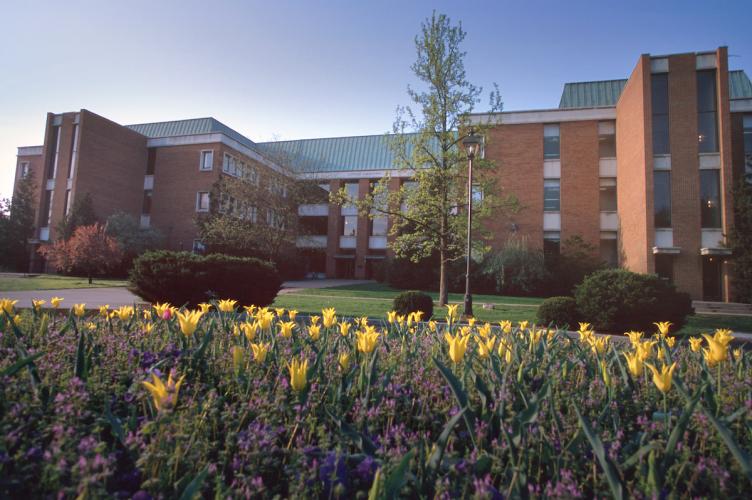
翻修使境况不佳的Clippinger成为“现代研究和学术设施”

Clippinger实验室的一项重大翻修工程的第一阶段目前正在建设中,包括对建筑物东半部的全面翻修。 这次翻新是一个3p项目的一部分hase plan, which is estimated to cost $115 million in total, and will provide state-of-the-art research and academic facilities.
Clippinger Laboratories is the home of the College of Arts and Sciences and is Ohio University’s central building for science-related activities, housing the departments of Physics and Astronomy, Chemistry and Biochemistry, Geography, and Geological Science. Because it is home to the sciences, most students attend class in the building for their core curriculum. Due to the high volume of students attending Clippinger, the significant deferred maintenance needs, and the need to reshape spaces to align with modern teaching practices, the renovation of the building was a top priority for University officials.
“Clippinger is a little complex because it involves four different academic departments with very different needs,” said Brian McCarthy, associate dean of faculty, research, and graduate studies in the College of Arts and Sciences, who took an active role in Clippinger’s design process.
Prior to the renovation, Clippinger had significant deferred maintenance needs. The building’s exterior, mechanical, electrical, plumbing, heating and air conditioning systems were all in need of updating, and many were original to the building’s 1967 construction. Furthermore, the program spaces were antiquated and not suitable for modern classrooms and laboratories; and due to insufficient space, the building could not accommodate student enrollment growth.
However, “Clippinger facility was structurally sound and conducive for programmatic improvements,” said Shawna Wolfe, associate vice president for University Planning, who oversees all campus master planning. So instead of starting anew, the University developed a multi-phase plan that included both new construction and renovation of Clippinger.
Plans for Clippinger had been in discussion for many years. The approved approach was developed as part of the University’s 2016 Comprehensive Master plan. The phased plan aligned with funding that was also available in phases. Once the project was approved by the Ohio University Board of Trustees, architects and engineers developed designs and plans reimagining the future of Clippinger. Phase 1 of the approach, which commenced in 2018 and was completed last year, included construction of the new Chemistry Building adjacent to Clippinger. Construction of Phase 3, which is still being designed, is slated to begin in 2023 and will renovate the western half of the building.
Beyond necessary repairs, academic needs have changed significantly in the half-century since Clippinger was first built, McCarthy explained.
“The old building was designed around 1960s standards of a building. Fifty years later there have been a lot of changes in technology and how students engage with learning,” he said.
Moreover, because Clippinger houses numerous science departments, it needs to meet very specific engineering requirements — like providing ample ceiling height and minimizing vibrations. When the renovation is completed, the four academic departments based in Clippinger will be in a strong position to best administer their curriculum, McCarthy said.
